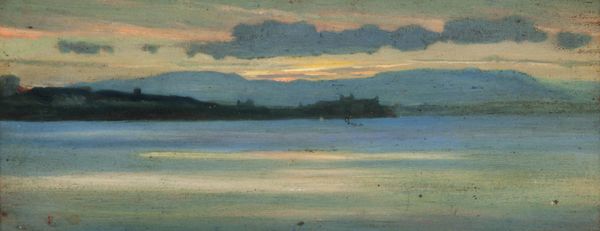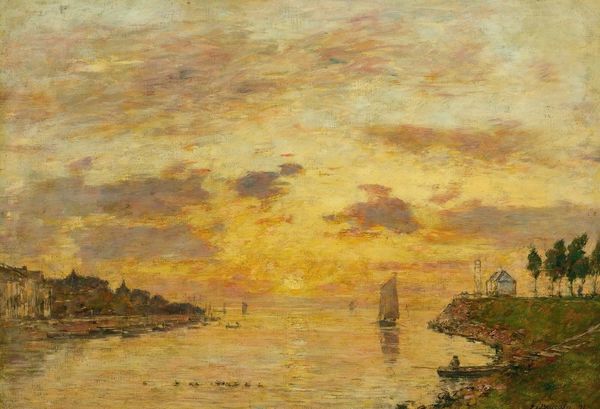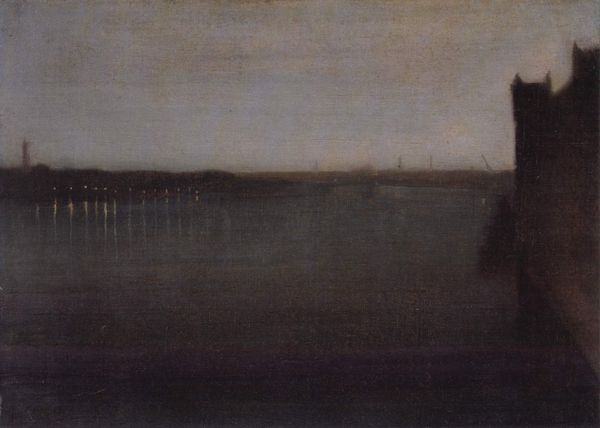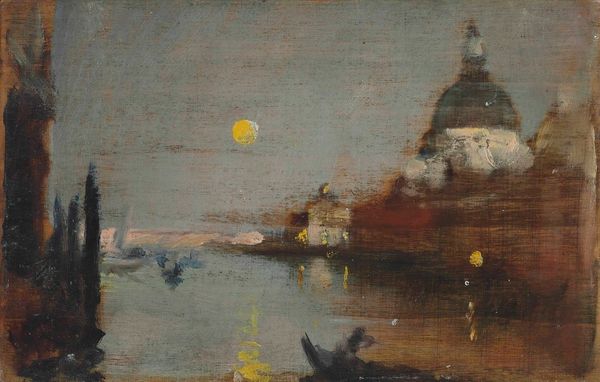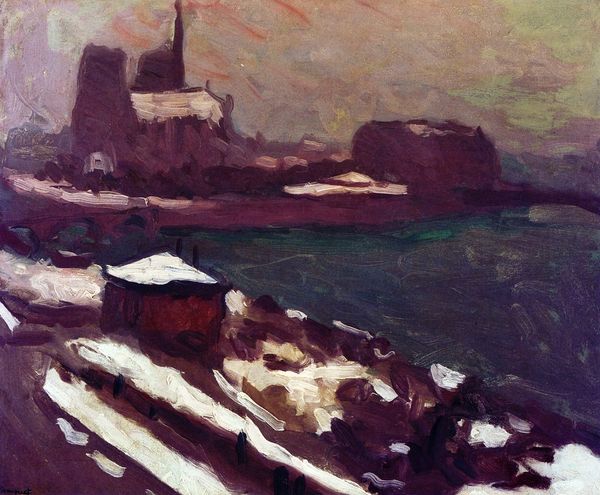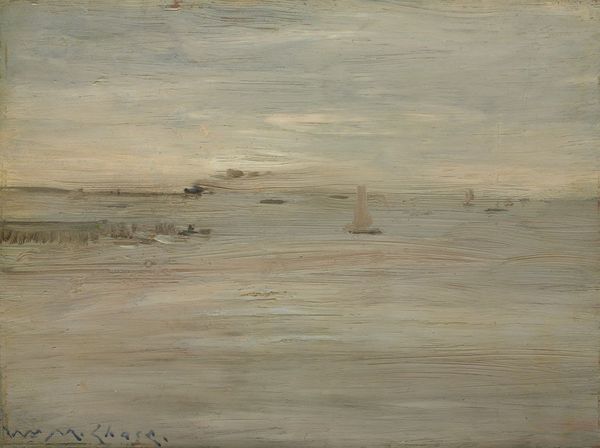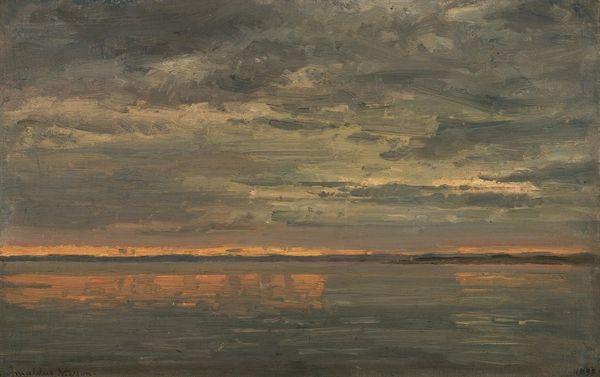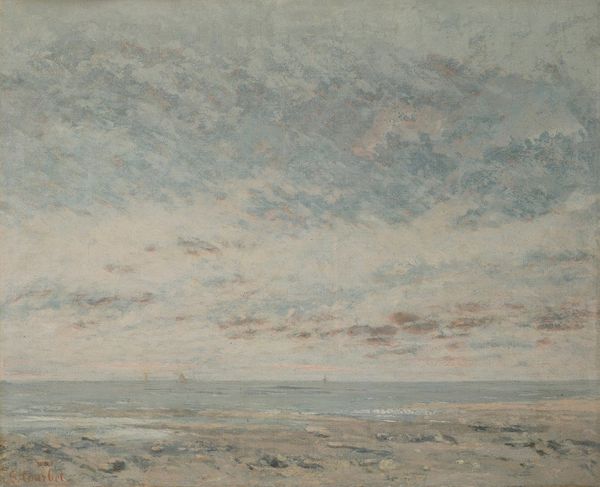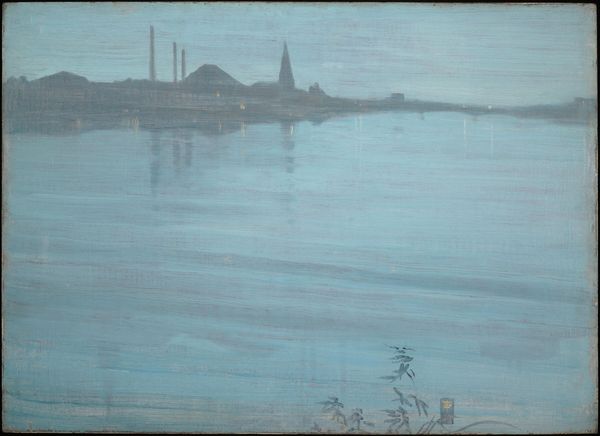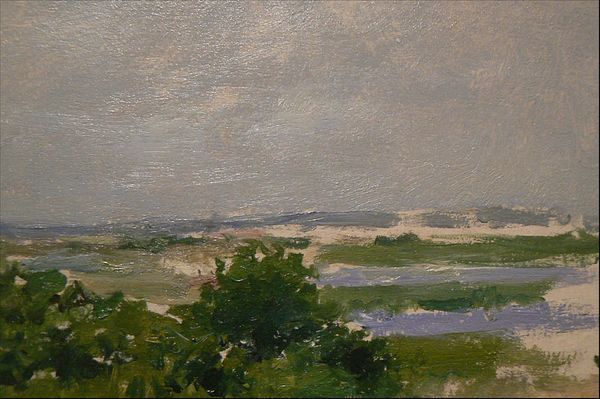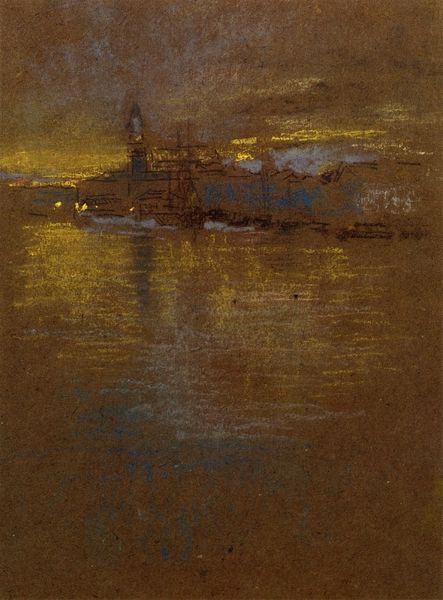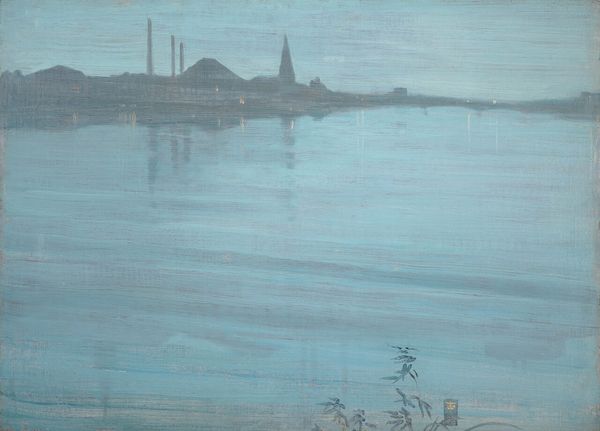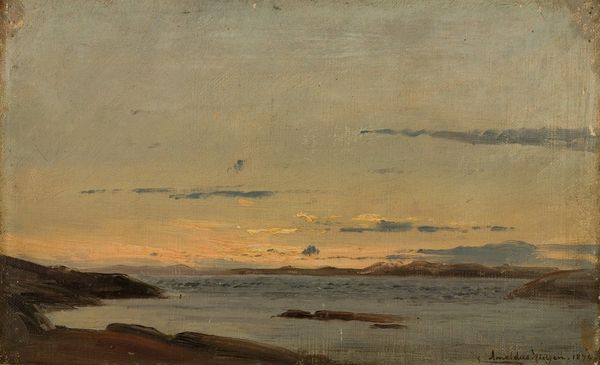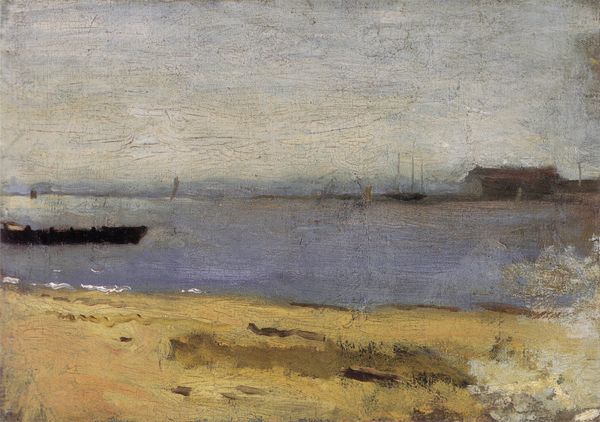
painting, oil-paint, fresco, mural
#
sky
#
rural-area
#
painting
#
atmospheric-phenomenon
#
impressionism
#
oil-paint
#
landscape
#
fresco
#
oil painting
#
romanticism
#
fog
#
mural
#
realism
Copyright: Vitold Byalynitsky-Birulya,Fair Use
Curator: Before us, we have a work titled "Tishina," attributed to Vitold Byalynitsky-Birulya, executed in oil paint. Editor: It’s certainly serene. The subdued palette creates a hazy, almost dreamlike quality. The way the planes are structured, from the foreground path leading up the hill to the distant water, draws the eye nicely. Curator: Right, note how the composition directs the gaze, reflecting the artistic process. The artist has labored to create depth and perspective using readily available materials—pigments, canvas—essentially transforming labor into a contemplative visual experience. Editor: I’m interested in how the artist uses muted greens and greys to create a very specific atmospheric perspective. See how the gradations in tone delineate space. The buildings are articulated with a sharp eye to formal geometries as well. Curator: Those formal qualities absolutely connect with material and production processes. Consider how pigments were ground and mixed, canvases stretched and primed—a physical engagement that informed the artwork’s eventual appearance and contributes to the artist’s particular vision of the rural area. Editor: I do wonder what the artist wanted to convey with such a choice of colors. Notice the contrast in the geometry of the building in the context of nature. Are we looking at the artist commenting on architecture and rural life of the area? Curator: Perhaps he aims at portraying rural life under specific societal condition through the repetitive act of painting and engaging with available materials and scenes? The very act of transforming natural resources—flax into canvas, minerals into pigment—is a key subject of exploration. Editor: Ultimately, “Tishina” invites us to examine our own visual language in relation to what we see, feel and how it renders our understanding of realism through shape and composition. Curator: Indeed, and by exploring these dimensions of labor, materials, and social interactions, we understand better both the painting's immediate impact and also its engagement with the broader social structures of artmaking itself.
Comments
No comments
Be the first to comment and join the conversation on the ultimate creative platform.
